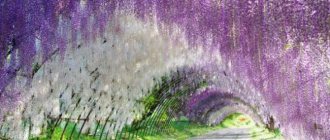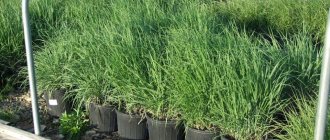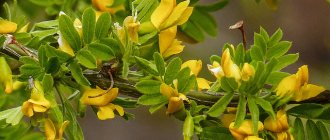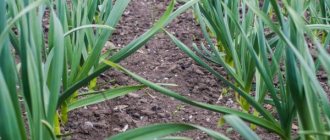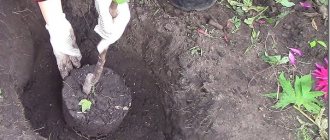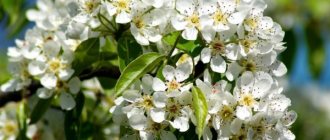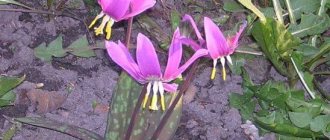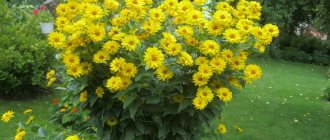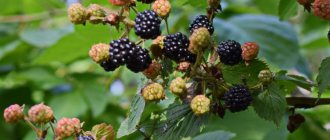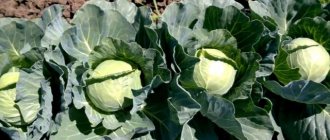Annual cypress is the name of a unique plant that looks like a fluffy ball. At different times of the year, the shade of the stems and leaves of Kochia changes: in the spring, delicate, bright greenery appears, in the summer - a combination of yellow and orange colors, in the fall, purple colors delight.
It is no coincidence that in many rankings, Trichophylla or Kochia are among the ten most interesting and beautiful species. Even novice gardeners can plant and care in open ground. There are several “little tricks” on how to maintain the spectacular appearance of an annual cypress tree longer. The article describes the nuances of caring, growing and propagating a highly ornamental plant.
Kokhia: main rules for planting
Growing this shrub is quite an interesting business. It prefers a fairly bright area, but if such a place is not available, the plant will be able to adapt to semi-shaded conditions. The main point is that the bush receives the daytime rays of the sun. Otherwise, if the bush is completely deprived of light, it can simply be ruined. In its natural habitat, this crop grows in semi-desert areas. This should also be taken into account.
The right time to plant kochia
Many gardeners recommend taking a closer look at the next period - from the beginning to the middle of the spring period, and planting in open ground itself at the end of the spring season. This time period gives the right to classify Kochia as a crop whose planting begins in early spring.
This subshrub is a rather unpretentious crop, especially regarding the soil, since it can take root even in depleted, not rich soil, but can die in waterlogged and acidified soil.
In the right conditions, the growth of an adult plant reaches one hundred centimeters.
In an open area and without neighbors, the freedom-loving bush will grow much more actively. Since the large area itself gives it a good opportunity to grow lush green mass. Otherwise, it will bloom ahead of schedule and lose its decorative properties. This nuance confirms the idea that Kochia is not a plant for home cultivation.
Agrotechnics of cultivation
In countries with warm and mild climates, Kochia is grown as a perennial plant. But tender subshrubs simply will not survive severe winter frosts. Therefore, in Russia Bassia is grown exclusively as an annual.
Kochia reproduces by seeds, which can be sown in late autumn or spring directly into open ground. But broom grass has one peculiarity - young seedlings absolutely cannot tolerate even slight drops in temperature.
Therefore, to protect themselves, many gardeners grow annual plants using seedlings. You will learn from the article when to plant Kochia seeds and how to care for the plantings.
Optimal planting dates
Flower growers often ask a number of questions: what conditions must be observed when growing Kochia from seeds, when to plant seedlings and how to care for them. In general, these activities do not require specific knowledge or skills, so even a beginner can cope with them.
Residents of the southern regions can plant Kochia seeds directly in open ground in mid-to-late May. The main thing is that at the time of sowing, the threat of return frosts has passed, and the night temperature is firmly established at around +10˚С +12˚С.
But even in this case, you will have to pay a lot of attention to the crops:
- at the slightest drop in planting temperature, it is necessary to cover with lutrasil;
- strictly monitor soil moisture and the condition of seedlings;
- young seedlings are a favorite delicacy of insect pests;
- if the plantings are too dense, the young plants will need to be thinned out.
When planting Kochia for seedlings, you need to focus on the timing of transplanting plants into open ground. In the central regions, seeds should be sown in late March - early April. But residents of the northern regions can start sowing no earlier than mid-April.
Interesting! Kochia broomata, which has the shape of a ball and takes on a purple color when autumn comes, is very popular among flower growers.
The main thing, when determining the timing of when to plant Kochia seedlings, is to take into account that seedlings are transplanted to a permanent place 2-2.5 months after sowing.
Preparing containers and soil
To grow strong and healthy annual cypress seedlings, it is important to properly prepare the soil and select suitable containers.
You can plant Kochia seeds for seedlings either in separate or in bulk containers. This can be disposable tableware, plastic molds, containers and boxes for growing seedlings. There are no special requirements for containers, other than the presence of drainage holes.
It is very convenient to use peat cups or tablets when growing Kochia from seeds at home. In this case, it will be easier for you to transplant plants into open ground.
When preparing suitable soil, it is worth paying attention to the fact that Bassia is very fond of loose, fertile soil with neutral acidity levels. Garden soil can be diluted with sand, peat and humus in a ratio of 1:0.5:1:1. If the acidity of the soil is high, add a little ash to the soil mixture.
The finished soil must be disinfected with a pink solution of potassium permanganate and left for 2-3 days. If you wish, you can bake the earth in the oven. Before planting Kochia seeds, make sure the soil is sufficiently moist but not too wet.
Bassia seeds remain viable for 2-3 years, no more. But it is still better that the seed material is fresh enough. Otherwise, you may be left without seedlings at all, and all your efforts will be in vain.
Interesting! Kochia received its name in honor of the botanist Joseph Koch.
Proper sowing of seeds
Before and when planting Kochia, the seeds can, if desired, be soaked for several hours in growth stimulants. However, even without treatment, they sprout quite quickly, 7-10 days after planting.
The algorithm for sowing Kochia seedlings is somewhat different from traditional activities:
- As usual, place a small layer of drainage on the bottom of the container;
- fill the container with pre-prepared soil;
- lightly compact the soil with a small wooden block;
- spread the seeds over the surface, lightly pressing them into the soil. If you sow seeds in boxes or containers, evenly distribute the seeds at an equal distance from each other in small grooves;
- Seeds should not be buried. Leave them on the surface;
- It is also not recommended to water the plantings heavily. Spray them a little from a spray bottle, cover the containers with lutrasil and place in a dark, cool place.
The optimal air temperature for growing Kochia seedlings is +18˚С +23˚С. You need to water the soil as needed. Before the first shoots appear, irrigate the plantings with a spray bottle. After friendly, green shoots appear, the seedlings can be watered with a stream. But it is important that water does not get on the plants.
Further care of Kochia seedlings involves timely watering and regular inspection.
Interesting! Another advantage of the subshrub is that summer cypress has healing properties.
The author of the video will tell you how and when to plant Kochia seeds for seedlings:
Picking seedlings
When growing Kochia from seeds at home, it is important to plant the seedlings correctly and in a timely manner.
Considering that Kochia seeds have to be planted superficially, the root system of the seedlings is very weak. Therefore, picking must be done very carefully, trying not to damage weak roots.
Picking is done in disposable cups, small pots, or larger containers. Drainage holes are required.
Picking begins when the sprouts reach a height of 5-7 cm. The soil for seedlings and the soil for picking should be identical in composition.
It is advisable to plant Kochia seedlings using the transshipment method. The seedlings are transferred to a prepared container along with a lump of earth, which avoids injury to the root system of the plant.
In the future, you will only need to water Kochia from time to time and make sure that the seedlings receive sufficient sunlight. With a lack of lighting, plants stretch out and become weak.
7-10 days after picking, feed Kochia grown from seeds with mineral fertilizers to stimulate the growth of green mass. Subsequent feeding - after 2-3 weeks.
When caring for Bassia, it is important not to overdo it with watering. Too wet soil is the first reason for the appearance of blackleg. If the first signs of the disease are detected, you need to urgently take emergency measures:
- remove infected plants immediately;
- do not water the plantings until the soil dries out;
- Sprinkle the soil with sand, perlite or wood ash.
In the future, try not to water Kochia too much.
Interesting! Dried branches of Kochia can be used to create compositions of dried flowers.
How to properly care for bushes
During the vegetative growth period, the plant needs regular care, namely: loosening, weeding, watering the soil and fertilizing with universal mineral complex fertilizers. The fertilizing itself is introduced on the tenth day after planting the crop in an open area, and then after thirty days.
The main feature of watering a plant is that it must be done when there is no precipitation. In order to avoid the flowering period at a time when the bush is less decorative. Kochia is usually fed with nitrogen fertilizers after the process of forming a lush crown and active development is completed. If the plant is limited in its nutrition and watering, it will fade, and the leaves will droop and look bad. And soil with a large amount of microelements, macroelements and nutrients will help the bushes to be especially lush.
Proper care of kochia
Planting kochia should be located in a well-lit area ; darkening is allowed only in a minimal amount. In a heavily shaded place, it will wither and may gradually die.
Seedlings need to be fed at least several times a month. And nitrogen fertilizers should be selected for this, because they influence the development of abundant green mass of leaves. And watering kochia should be extremely careful. It's better to underfill than overfill . A slight drought will not cause harm to the plant, but excessive stagnation of water can destroy the roots and the greenery will die. The plant is very unpretentious in care.
An equally important stage of care is pruning. This can be done quite easily with ordinary scissors or pruning shears. In this case, the plant will keep its shape for a long time. Kochia diseases are completely harmless; it has a fairly strong immune system . But pests can also attack this resistant plant. It is most often affected by spider mites. So, as soon as you notice the first signs of spider mites, immediately begin treating with pesticides.
How to trim and shape the kochia crown
Based on the fact that this crop tolerates pruning well, one task arises. How to trim it to form a beautiful and lush crown? After all, this bush can be planted in absolutely any type and shape, because it will last quite a long time.
At the moment, cutting and pruning of various shrubs and subshrubs are widely used in landscape design. This includes creating a variety of geometric elements and shapes.
Among the tools, in addition to the hydraulic pruner, we will need ropes and small boards.
One of the lightest geometric elements is considered to be the cube. To create a green cube using Kochia with sides of one hundred centimeters, you will need about five plants. They are planted in the corners maintaining a distance of eighty centimeters, and the fifth bush must be planted exactly in the center. Afterwards, you need to outline the boundaries along which the future frame will be built.
At the beginning there is a test pruning: you need to leave some margin above the frame building of two centimeters. You need to start cutting from the top area and leave along the side parts. The final version of the crown formation is moved on after a more thorough check of the preliminary version.
Recommends trimming the subshrub every fourteen days to maintain the desired shape.
Kochia in the form of "Ball"
Initially, this type of plant cutting is done by eye. For beginner gardeners, it is recommended to first cut Kochia in the shape of a cube, and only then truncate it and give it the shape of a ball or sphere. After getting your hands full in these forms, it will be much easier to cut bushes in the shape of animals, boulders, and so on.
Formation in the form of a column or cylinder
To create them, Kokhia needs to grow in a sufficiently illuminated area. Before cutting, slats are placed along the entire perimeter of the crop - which will be the main frame. Periodically, during the process of pruning a bush, it is necessary to look at the bush from the outside and evaluate the process, cleaning up shortcomings.
It is also important that during cutting the position of the slats is strictly vertical.
Kochia in the form of a “cone”
To trim a bush in this shape, a circle is drawn around Kokhia and a slatted frame attached to the top is placed along its contours. At the time of pruning, you need to move systematically from the top to the bottom.
Kochia in the shape of a “spiral”
One of the most time-consuming cuttings is the shape, which must be carried out gradually, in two stages. First, you need to give it a perfect cone shape, and tie a bright rope to the lower part of the central stem and wrap it around the trunk to the very top.
It is important to clearly maintain the inclined angle and the distance between the turns. Then you need to fix the rope on the apical part and use pruning shears to cut a spiral shape along the rope. Next, use trellis scissors to form rounded coils.
Combining kochia and other plants in one flowerbed
The options for using kochia in landscape design are varied. You can get ideas for combining kochia and other plants on the Internet from photos or gardening magazines, and also use your own boundless imagination. Kochia plantings are used for borders, flowerbeds on a personal plot or in urban landscaping. In addition, summer cypress can become a true decoration of any garden composition and even an alpine hill.
The greenery of kochia leaves can decorate and dilute the beauty of any floral colors. Yellow marigold caps will look gorgeous against the background of green kochia. An equally beautiful effect can be achieved when planting kochia in a rose garden. Such an unusual combination can become a real masterpiece in your garden. And if you plant this plant on an alpine hill in combination with lavender, it will sparkle with new tones and colors.
It is worth paying special attention to the kochia figurines in your garden plot. Their diversity is simply amazing. Landscape designers are simply bursting with interesting ideas: you can find kochia figurines in the shape of hearts, nesting dolls, snakes, hares and even a wide variety of geometric shapes. Here the possibilities of imagination are simply unlimited. You can recreate both a zigzag hedge and a fancy border. The main thing is to put a little effort into growing this interesting plant and caring for it, then your site will sparkle with new colors.
It is also worth considering that with the arrival of autumn, when the plant changes color, your flower beds and the appearance of the entire area completely changes. If in the summer kochia can become a wonderful green border on the site, then in the fall, when it changes color to yellow, red or orange, the plant may well become a true decoration of your site. And if you combine the plant with the queen of autumn, chrysanthemum, the effect will be simply amazing.
It is worth noting that florists are also very fond of kochia. When autumn comes, its branches are actively used to decorate bouquets. And if you paint dried kochia branches in different colors, you can get incredible combinations.
How can you propagate the Kochia subshrub?
Absolutely every variety of this subshrub is propagated initially by seeds; they need to be sown at the beginning of the spring period. The ideal temperature for sowing them is eighteen to twenty degrees Celsius. Based on this, the seeds must first be planted in a greenhouse, and only later transferred to an open area.
This is important, since low night temperatures can destroy the crop.
At the time of collecting sprouted seeds, it is important to loosen furrows one centimeter wide, but with a distance of thirty centimeters. So at the beginning the seedling needs a lot of sunlight. In this case, there is no need to dig them deep - it is only important to lightly sprinkle them with soil and water them abundantly, otherwise the leaves will simply wither.
When the seedlings have already reached seven centimeters in height, it is important to pick them correctly. Picking is needed so that the root system develops, and the central trunk, as well as the stems, are strengthened. When the first leaves appear, the seedlings need to be planted in separate containers.
When picking seedlings, it is important to dig them out together with a clod of earth without damaging the young roots. And also take care of the seedlings, after transplantation and until the end of the spring season, until their height reaches twenty centimeters.
Description of culture
The genus Kochia is represented by perennial shrubs and annual herbaceous plants with a height of 10-15 cm to 1 m. The root system of all species is quite powerful; for this reason, kochia is not grown in pots. The crown is dense, highly branched, shoots grow very quickly. The leaves are narrow, thread-like, without petioles (“sessile”), rich green in color; by autumn, in most species, their color changes to red-brown or bright burgundy. Small white flowers are located in the axils of the leaves, the fruits are small round nuts, each containing one seed.
Related article:
What does the evergreen shrub heather look like?
This representative of the amaranth family prefers well-drained soils with a neutral or slightly acidic pH and well-lit areas. Lowlands with high soil moisture are not suitable for growing kochia.
Kochia has a number of healing properties. Tinctures and decoctions are made from its seeds and stems, which are used as a diuretic, diaphoretic, and laxative. Based on kochia, preparations are prepared that have antimicrobial and cardiotonic effects.
Place of kohia in landscape design and favorable neighborhood
In landscape design, this shrub provides you with simply endless space for your thoughts to fly. With the help of this plant you can create: a hedge, a decorative flower bed, a green border, a decorative hill, a rose garden. Also goes great with lavender. All designers skillfully use the chameleonic nature of kochia - in the summer it is a green background, and in the fall it is red and yellow. In floristry, branches of this shrub are woven into bouquets and diluted with them in various compositions.
Where and how else can you use a subshrub?
Kochia is a valuable shrub with a spherical shape. It is magnificent both in splendid isolation, and in a decorative flower bed, in a group lawn planting, on a decorative hill, in a rose garden, and so on.
A good idea would be to plant Kochia near large stones, or create clipped compositions, as well as green hedges.
In everyday life, various brooms have been woven from kohia for a long time, which is why it is also called “broom” grass.
In the medical field, namely homeopathy, kochia helps treat a variety of skin diseases, swelling and rheumatism. A decoction of kochia helps in toning the body. It also has a diuretic, cardiac stimulant, diaphoretic and laxative effect.
In Asian medicine, gels and ointments are produced based on it. Skin diseases are also treated, and the fresh leaves of the bush are used in cooking and when feeding cattle.
Kochia: types and varieties for open ground
Lush ball bushes always attract attention. The cold-resistant species grows in Europe, North America, Asian countries, and Australia. Kochia's homeland is China.
People call the plant not only “Summer Cypress”, but also “broom grass”: flexible, but quite strong, branches make an excellent basis for a broom. Trichophylla are perennials and annuals, cold-resistant species with leaves that change color throughout the season. There is a species that retains a soft green hue from spring to autumn.
The spherical kochia (broom variety) has been known since the mid-17th century, the species was discovered by the German botanist Wilhelm Koch. Later, in scientific works, the plant received a second name - Bassia.
Kochia is often called "Annual Cypress" because of the similarity of the foliage, reminiscent of delicate, fluffy needles, but Trichophylla belongs to another family - Chenopodiaceae. Sometimes the species is included in the Bassia genus and the Amaranth family, but Kochia has nothing to do with conifers.
Kochia broom is used most often in decorative landscaping:
- cold-resistant type;
- the plant tolerates drought well;
- in Kochia corolla Child, the leaves are constantly green, and in another variety, Volosolifolia, they change from emerald green to red;
- leaves are thin, pubescent, narrow. The flowers are small, located in spike-shaped inflorescences;
- The kochia fruit is a single-seeded nut. The basis for propagation is small: there are more than a thousand seeds per 1 g;
- bassia is planted in group plantings, for decorating ceremonial flower beds, as a highlight of the garden, in front gardens and mixborders. Bassia borders, topiary, decor for alpine slides - there are countless places where trichophylla looks most advantageous;
- Bassia tolerates pruning well: talented gardeners create original “sculptures” from lush bushes.
Hitachi Park in Japan is an amazing place where millions of tourists come. At different times of the year, entire fields of spectacular plants bloom over a large area. Beauty lovers come to festivals where the “main violin” is played by: Nemophila, Tulip, Narcissus, Poppy, Sakura, Lily. Kochia is also given a place of honor in the program: in July, Hitachi Park is decorated with thousands of lush balls with bright greenery; by September, the fluffy bushes turn yellowish-orange, and at the beginning of October - purple-red. The flowerbed fields are a fantastic sight! Look what Kochia looks like. The photos are impressive!

